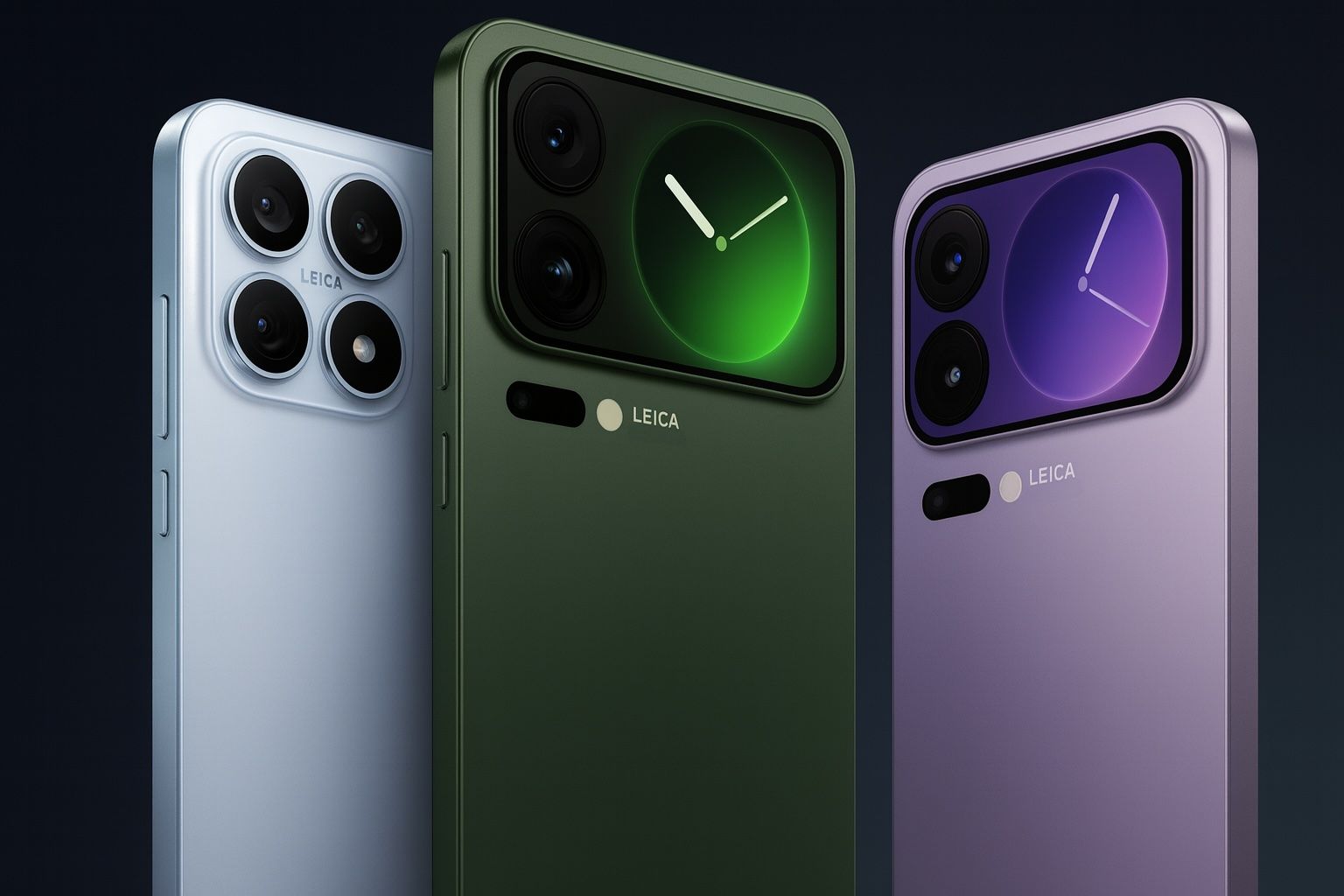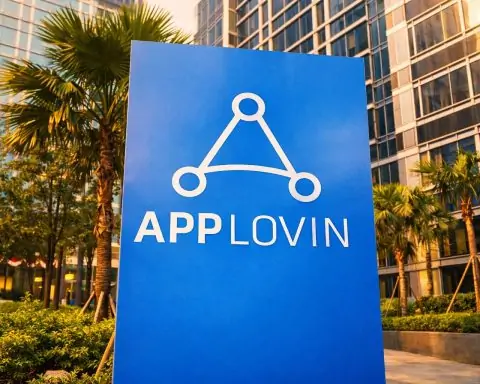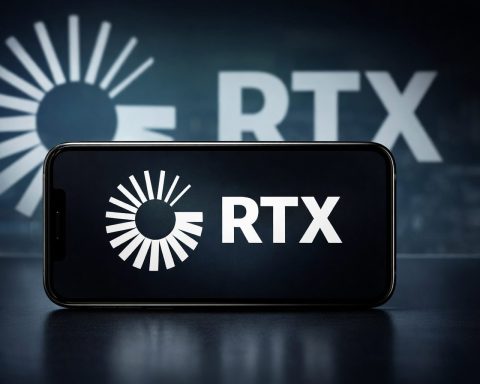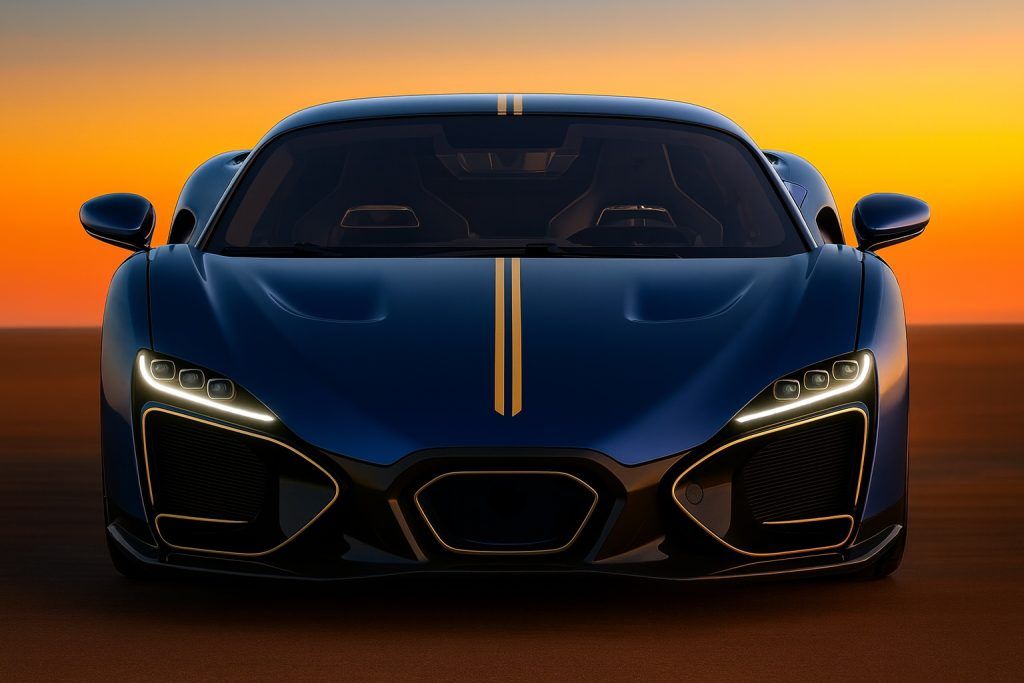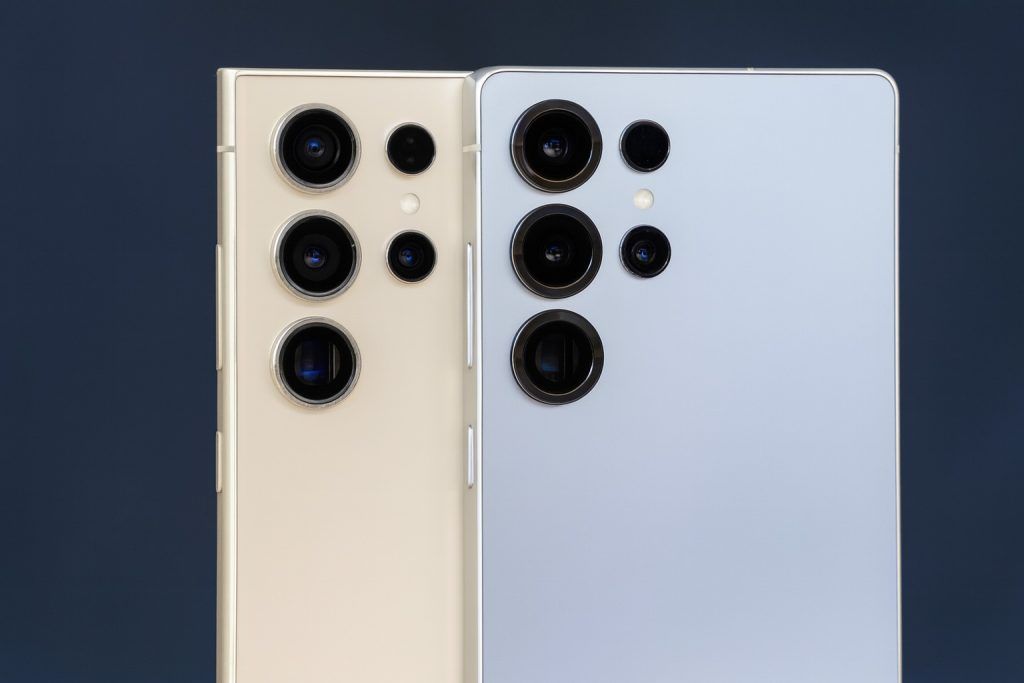- Xiaomi skips to “17” to rival Apple: Xiaomi unveiled its 17 Pro and 17 Pro Max flagships in China, intentionally skipping a “16” generation to align directly against Apple’s iPhone 17 series [1]. Company president Lu Weibing even said “we are directly competing with the iPhone in the same generation and at the same level” [2].
- Second screen on the back: Both Xiaomi 17 Pro models feature a secondary AMOLED display on the rear (2.7″ on the 17 Pro, 2.9″ on the Pro Max) next to the camera module [3] [4]. This mini screen shows notifications, music controls, and widgets, and even acts as a viewfinder for selfies with the main cameras [5] [6]. Xiaomi calls it the “Dynamic Back Display” and integrated it into Android 16-based HyperOS for practical use (e.g. incoming calls, QR codes, and a Game Boy-style case for gaming on the tiny screen) [7] [8].
- Massive battery capacity: The Xiaomi 17 Pro Max packs a gigantic 7,500 mAh battery (the 17 Pro has 6,300 mAh), eclipsing the ~5,000 mAh batteries found in most rival flagships [9]. Both support 100W fast wired charging (and 50W wireless), far outpacing Apple’s iPhones [10]. Xiaomi even claims the base model 17 (with 7,000 mAh) gets over 22 hours of video playback on a charge [11], and famously demoed its endurance by strapping a 5,000 mAh MagSafe pack to an iPhone 17 and still beating it in battery life [12].
- Top-tier specs with new Snapdragon chip: The 17 Pro/Pro Max debut Qualcomm’s latest Snapdragon 8 Elite Gen 5 (a cutting-edge 3 nm chipset) for class-leading performance [13]. They boast up to 16 GB RAM and 1 TB storage, plus a Leica-tuned triple 50 MP rear camera system (wide, ultra-wide, and 5× periscope telephoto) with big sensors and optical zoom [14] [15]. There’s even a 50 MP front camera on all models, leveraging the rear screen for high-quality selfie previews [16] [17].
- Price undercuts Apple, limited release: Xiaomi priced the 17 series aggressively – starting around ¥4,999 (~$700) for the 17 Pro and ¥5,999 (~$820) for 17 Pro Max [18], significantly cheaper than an iPhone 17 Pro. CEO Lei Jun bragged that Xiaomi’s 17 “wins on battery, performance, photography and more” versus Apple [19]. However, the 17/17 Pro/Pro Max launched in China only (Sept 2025) [20] with no global release confirmed yet [21]. A European debut in 2026 (possibly around MWC) is rumored, but U.S. availability is unlikely due to trade bans on Chinese phones [22].
Xiaomi Takes Aim at Apple with the ‘17’ Series
Xiaomi made it no secret that it’s gunning directly for Apple’s crown in this product cycle. By jumping from last year’s Xiaomi 15 series straight to Xiaomi 17, the Chinese company aligned its naming with Apple’s iPhone 17 – immediately inviting head-to-head comparison [23]. During the launch event in Beijing, CEO Lei Jun repeatedly stacked the Xiaomi 17 Pro against Apple’s latest, boldly claiming his phones “win on battery, performance, photography and more” [24]. President Lu Weibing candidly explained the strategy: “We are directly competing with the iPhone in the same generation and at the same level,” he wrote on social media [25]. In other words, Xiaomi wants shoppers to see a “17 vs 17” showdown when considering premium phones.
Design-wise, Xiaomi isn’t shy about the comparison either. The Xiaomi 17 Pro and Pro Max adopt a square camera island reminiscent of the iPhone 17 Pro’s new “camera plateau” – but with a twist. Xiaomi filled that plateau with a working screen rather than a blank glass panel [26]. This clever move turns a design cue Apple introduced into something uniquely functional on the Xiaomi device, and it immediately sets the 17 series apart in a way that grabs attention. Xiaomi essentially looked at Apple’s big new camera bump and said: why not make it a screen?
Dual Screens for Notifications, Selfies and Gaming
The headline feature of the Xiaomi 17 Pro/Pro Max is undoubtedly that second display on the back of each phone. It’s a small but high-quality AMOLED panel (approximately 2.7 inches on the 17 Pro and 2.9 inches on the Pro Max) situated next to the rear camera lenses [27] [28]. This isn’t a gimmicky e-ink notification ticker – it’s a full-color, 120 Hz mini screen with up to 3,500 nits brightness, essentially like the cover screen of a Galaxy Z Flip folded phone [29] [30].
Xiaomi calls it the “Dynamic Back Display,” and it’s used for a host of practical functions. The rear screen can show you at-a-glance info like the time, battery status, incoming calls and messages, music controls, or even live updates (think flight status or delivery tracking) without you having to turn on the main display [31] [32]. It supports always-on display modes and widgets, effectively acting like a smartwatch on the back of your phone [33]. For photographers, this little panel becomes a selfie preview window – you can flip the phone around and use the superior rear cameras to take a selfie, all while framing yourself in the rear display acting as a viewfinder [34]. This means the 17 Pro series can take ultra-detailed 50 MP self-portraits using the main camera sensors, a trick not possible on any iPhone or conventional flagship.
Xiaomi even found a way to turn the rear display into a gadget for retro gaming. The company announced an official “GameBoy-style” case that snaps onto the phone, complete with physical game controller buttons, letting you play games on the tiny back screen like a pocket console [35] [36]. It’s an eye-catching nod to nostalgia and a demonstration of the secondary screen’s responsiveness. Reviewers have noted that previous attempts at dual-screen phones often felt gimmicky, but Xiaomi’s implementation is polished – the back display is deeply integrated into Xiaomi’s new HyperOS software (based on Android 16) for smooth functionality [37]. In fact, tech writers have described the 17 Pro Max’s dual-screen design as “totally bonkers in a way Apple can’t match” [38] – a playful way of saying Xiaomi’s bold innovation goes beyond what we’ve seen from more conservative rivals like Apple.
Notably, this isn’t Xiaomi’s first rodeo with extra screens – the 2021 Mi 11 Ultra had a tiny 1.1″ rear micro-display – but the Xiaomi 17 Pro series takes the concept to a new level. By making the back screen larger and far more functional, Xiaomi is testing whether two displays can genuinely enhance everyday smartphone use, not just turn heads in a demo. So far, the implementation has been well-received as more than a gimmick, providing real utility for selfies, notifications, and quick controls without needing to touch the main screen.
Monster Battery Life and Super-Fast Charging
If the dual displays don’t make the iPhone 17 look cautious by comparison, the battery specs certainly do. Xiaomi managed to cram in enormous batteries for both new models, leaving even the largest iPhone in the dust. The Xiaomi 17 Pro Max carries a 7,500 mAh battery – an unprecedented capacity for a mainstream flagship phone – while the slightly smaller 17 Pro still gets a hefty 6,300 mAh cell [39]. For perspective, Apple never discloses battery sizes, but regulatory filings indicate the iPhone 17 Pro Max has around a 5,088 mAh battery, and Samsung’s top Galaxy S25 Ultra sits at 5,000 mAh [40]. In raw capacity, the Xiaomi 17 Pro Max has about 50% more battery than Apple’s best, which is a staggering advantage in theory.
Xiaomi leveraged new silicon-carbon (silicon-carbide) battery technology to achieve these capacities without making the phones absurdly bulky [41] [42]. Chinese manufacturers have been pioneering these higher-density batteries lately, reaching capacities near 10,000 mAh in some niche phones, whereas U.S. and Korean brands have lingered around ~5,000 mAh [43]. The result for Xiaomi is multi-day battery life: the company claims the base Xiaomi 17 (non-Pro) with its 7,000 mAh battery can last over 22 hours of video playback, outlasting the entire iPhone 17 lineup [44]. In an attention-grabbing demo at the launch event, Xiaomi played a video on an iPhone 17 alongside a Xiaomi 17; then they attached Apple’s own 5,000 mAh MagSafe battery pack to the iPhone (to boost it to ~10,000 mAh total) – and the Xiaomi still kept playing longer [45]. This dramatic test drove home the point that Xiaomi’s battery endurance is on another level.
Charging speeds are equally aggressive. Both the 17 Pro and Pro Max support 100 W wired turbo charging, which can refill these huge batteries extremely quickly [46]. (Xiaomi says its 100W HyperCharge can fully charge the 17 Pro in just around 20–30 minutes, though real-world times may vary.) For comparison, Apple’s iPhone 17 Pro Max is limited to around 27W charging. The Xiaomi phones also support 50 W wireless charging – faster than many wired chargers – and even reverse wireless charging at 22.5 W, meaning you can use the phone to wirelessly charge earbuds, smartwatches, or even a friend’s phone by placing them back-to-back [47]. This essentially turns the 17 Pro Max into a portable high-capacity power bank. With an IP68 rating and advanced cooling systems to handle the fast charging and 3 nm chipset heat, Xiaomi has thrown down a gauntlet in the battery department. It’s clear the company saw an opening to one-up Apple on battery life and took it, reinforcing Xiaomi’s narrative that the 17 series delivers “more for less” [48].
Cutting-Edge Performance and Leica Cameras
Beyond the flashy screens and batteries, the Xiaomi 17 series is every bit a 2025 ultra-premium smartphone on core hardware. In fact, it’s the first phone family announced with Qualcomm’s new Snapdragon 8 Elite Gen 5 chipset, which is Qualcomm’s latest flagship 3 nm processor [49]. This chip is expected to power many 2026 Android flagships, but Xiaomi has the early bragging rights. It brings performance and efficiency gains that should make the 17 Pro and Pro Max among the fastest Android phones on the market. Paired with up to 16 GB of LPDDR5X RAM, these phones can handle intensive multitasking and mobile gaming with ease [50]. Storage options go up to 1 TB, using UFS 4.0 storage for speedy data access, which hardcore users and shutterbugs (with lots of 50 MP photos) will appreciate [51]. Out of the box, the devices run Xiaomi’s new HyperOS 3 (built on Android 16), which refines the user experience and ties together Xiaomi’s ecosystem. Early impressions indicate a snappy, fluid performance across the board, as expected from such bleeding-edge silicon.
Photography is another major focus for Xiaomi, continuing its partnership with legendary camera maker Leica. The Xiaomi 17 Pro and Pro Max both sport a triple 50 MP rear camera array co-engineered with Leica [52] [53]. Each phone’s setup includes a 50 MP main wide camera (featuring a large 1/1.28″ sensor and bright f/1.67 lens for excellent low-light ability) [54], a 50 MP ultra-wide camera for expansive shots, and a 50 MP periscope telephoto lens for zoom. The Pro Max’s telephoto uses a slightly larger sensor than the Pro’s, but both offer 5× optical zoom with optical image stabilization, bringing distant subjects into clear focus [55]. This level of zoom capability, combined with high-resolution sensors, is clearly aimed at competing with the likes of Samsung’s Space Zoom and outdoing the iPhone 17 Pro’s 3× telephoto. Xiaomi is emphasizing the Leica Summilux lenses and color science to appeal to photography enthusiasts – the promise is vibrant yet natural colors and excellent dynamic range, leveraging Leica’s tuning know-how from the camera world.
On the front, Xiaomi even ditched the usual 20-32 MP selfie cameras and equipped all three 17 models with a 50 MP front camera [56] [57]. This makes the Xiaomi 17 series ideal for high-res selfies and video calls. And thanks to the rear display, users can also choose to take selfies with the superior rear cameras instead – simply frame yourself using the back screen and snap a selfie that way [58]. This effectively gives you the best of both worlds for self-portraits: you can use the highest-quality camera sensors for your photos (like the main 50 MP with its large sensor and Leica optics) while still seeing a preview of yourself on the rear screen. It’s a clever workaround to the eternal front-camera quality dilemma. By comparison, Apple’s iPhone 17 Pro Max relies on a single 48 MP main camera and a much lower resolution front camera (around 12 MP), so Xiaomi is flexing some spec sheet muscle here.
In day-to-day use, these specs mean the Xiaomi 17 Pro/Max should handle any task you throw at them – from graphically demanding games to 8K video recording – without breaking a sweat. They also come with advanced vapor chamber cooling to dissipate heat (Xiaomi even detailed the cooling plate sizes: over 5,500 mm² on the Pro Max) [59], ensuring sustained performance. Combined with the power efficiency of the 3 nm chip and that huge battery, the 17 series is built for endurance gaming and photography sessions. All told, Xiaomi is delivering true ultra-flagship hardware that in many areas meets or exceeds what Apple and Samsung currently offer. It backs up Lei Jun’s confident claims – at least on paper – that Xiaomi can go toe-to-toe with the best phones in the world in 2025.
Pricing Strategy and Availability
Despite its high-end specs, Xiaomi’s new flagship series significantly undercuts equivalent Apple and Samsung devices on price – a deliberate strategy to capture value-conscious premium buyers. In China, the base Xiaomi 17 Pro (12GB RAM, 256GB storage) starts at ¥4,999 (approximately $680), and the 17 Pro Max starts at ¥5,999 (~$820) for the same memory configuration [60]. Even the maxed-out 17 Pro Max with 16GB+1TB is ¥6,999 (~$960) [61], which is still a few hundred dollars less than an iPhone 17 Pro Max with 1TB (Apple’s top models typically run well above $1,500). By offering more RAM, more storage, and features like a second screen and bigger battery at a lower price, Xiaomi is emphasizing value. It’s a familiar play: challenge the incumbent (Apple) by delivering “more for less” [62]. As Gadget Review put it, Xiaomi is positioning the 17 series as “the flagship alternative that offers more for less.” [63]
However, there’s a catch: availability. Right now, the Xiaomi 17 trio is limited to China. The phones went on sale in China in late September 2025 (after pre-orders began immediately at launch) [64]. Xiaomi did not announce a firm timeline for international rollout [65]. In recent years, Xiaomi has often released its flagship models in Europe and other Asian markets a few months after the China launch. Many analysts suspect Xiaomi will bring at least the 17 Pro or Pro Max to global markets by early 2026 – possibly timing a debut around Mobile World Congress (MWC) in February/March 2026 [66] [67]. Xiaomi’s president Lu Weibing hinted that the new naming and strategy are global-minded, so a wider release seems plausible. Europe is the most likely destination for a global version, given Xiaomi’s strong presence there.
For the United States, unfortunately, the prospects are dim. Xiaomi (like Huawei and other Chinese OEMs) faces an effective ban in the U.S. market, and its smartphones aren’t officially sold by U.S. carriers or retailers [68]. The Xiaomi 17 Pro Max is unlikely to ever get an official U.S. launch, barring a major change in trade policy. Enthusiasts in the West who are eager for the device would have to import it, which comes with challenges like lack of warranty, limited 5G band support, and Chinese software out of the box. Indeed, on forums some die-hard fans have already begun importing the 17 Pro Max and sharing tips on making it work overseas (e.g. sideloading Google services) [69] [70]. Xiaomi seems content, for now, to grab headlines and market share in China and parts of Europe, where it can directly tug at Superman’s cape (Apple’s and Samsung’s) without the hurdles of the U.S. market.
In summary, the Xiaomi 17 Pro Max – along with its siblings – represents Xiaomi’s most audacious flagship effort yet. By synchronizing its model number with Apple’s iPhone 17 and then outdoing it in key specs (like battery, charging, and display innovation), Xiaomi is sending a message that it wants to play in the same league as Apple and Samsung at the very high end [71]. From the dual-screen design that one expert called “bonkers” [72], to the enormous battery that mocks Apple’s smaller cells, Xiaomi is showcasing its ability to push boundaries. The big question that remains is whether these bold moves will translate into global success or remain a China-only tech spectacle. If nothing else, the Xiaomi 17 Pro Max has accomplished one thing for sure: it has tech enthusiasts around the world asking, “Why didn’t Apple make a phone like this?” and pondering just how much smartphone innovation is now coming out of China’s top brands. In the ongoing Android vs iPhone war, Xiaomi just raised the stakes – and did so with a second screen and a whole lot of battery to back it up.
Sources: Xiaomi Launch Event and Social Media via Tom’s Guide [73] [74]; TechRadar [75] [76]; Tom’s Guide [77] [78]; Gadget Review [79] [80]; Mashable (via Ground News) [81]; SoyaCincau [82] [83]; Reddit (r/Xiaomi) [84].
References
1. www.tomsguide.com, 2. www.tomsguide.com, 3. www.gadgetreview.com, 4. www.techradar.com, 5. www.gadgetreview.com, 6. www.tomsguide.com, 7. www.gadgetreview.com, 8. www.tomsguide.com, 9. www.techradar.com, 10. www.tomsguide.com, 11. www.tomsguide.com, 12. www.tomsguide.com, 13. www.techradar.com, 14. www.techradar.com, 15. soyacincau.com, 16. www.techradar.com, 17. www.gadgetreview.com, 18. www.gadgetreview.com, 19. www.tomsguide.com, 20. www.gadgetreview.com, 21. www.gadgetreview.com, 22. www.tomsguide.com, 23. www.tomsguide.com, 24. www.tomsguide.com, 25. www.tomsguide.com, 26. www.tomsguide.com, 27. www.gadgetreview.com, 28. www.techradar.com, 29. www.techradar.com, 30. soyacincau.com, 31. www.gadgetreview.com, 32. soyacincau.com, 33. www.gadgetreview.com, 34. www.tomsguide.com, 35. www.gadgetreview.com, 36. www.tomsguide.com, 37. www.gadgetreview.com, 38. ground.news, 39. www.techradar.com, 40. www.techradar.com, 41. www.tomsguide.com, 42. soyacincau.com, 43. www.tomsguide.com, 44. www.tomsguide.com, 45. www.tomsguide.com, 46. www.tomsguide.com, 47. soyacincau.com, 48. www.gadgetreview.com, 49. www.techradar.com, 50. www.techradar.com, 51. www.techradar.com, 52. www.techradar.com, 53. soyacincau.com, 54. soyacincau.com, 55. soyacincau.com, 56. www.techradar.com, 57. soyacincau.com, 58. www.gadgetreview.com, 59. soyacincau.com, 60. www.gadgetreview.com, 61. soyacincau.com, 62. www.gadgetreview.com, 63. www.gadgetreview.com, 64. ground.news, 65. www.gadgetreview.com, 66. www.tomsguide.com, 67. soyacincau.com, 68. www.tomsguide.com, 69. www.reddit.com, 70. www.reddit.com, 71. www.gadgetreview.com, 72. ground.news, 73. www.tomsguide.com, 74. www.tomsguide.com, 75. www.techradar.com, 76. www.techradar.com, 77. www.tomsguide.com, 78. www.tomsguide.com, 79. www.gadgetreview.com, 80. www.gadgetreview.com, 81. ground.news, 82. soyacincau.com, 83. soyacincau.com, 84. www.reddit.com
